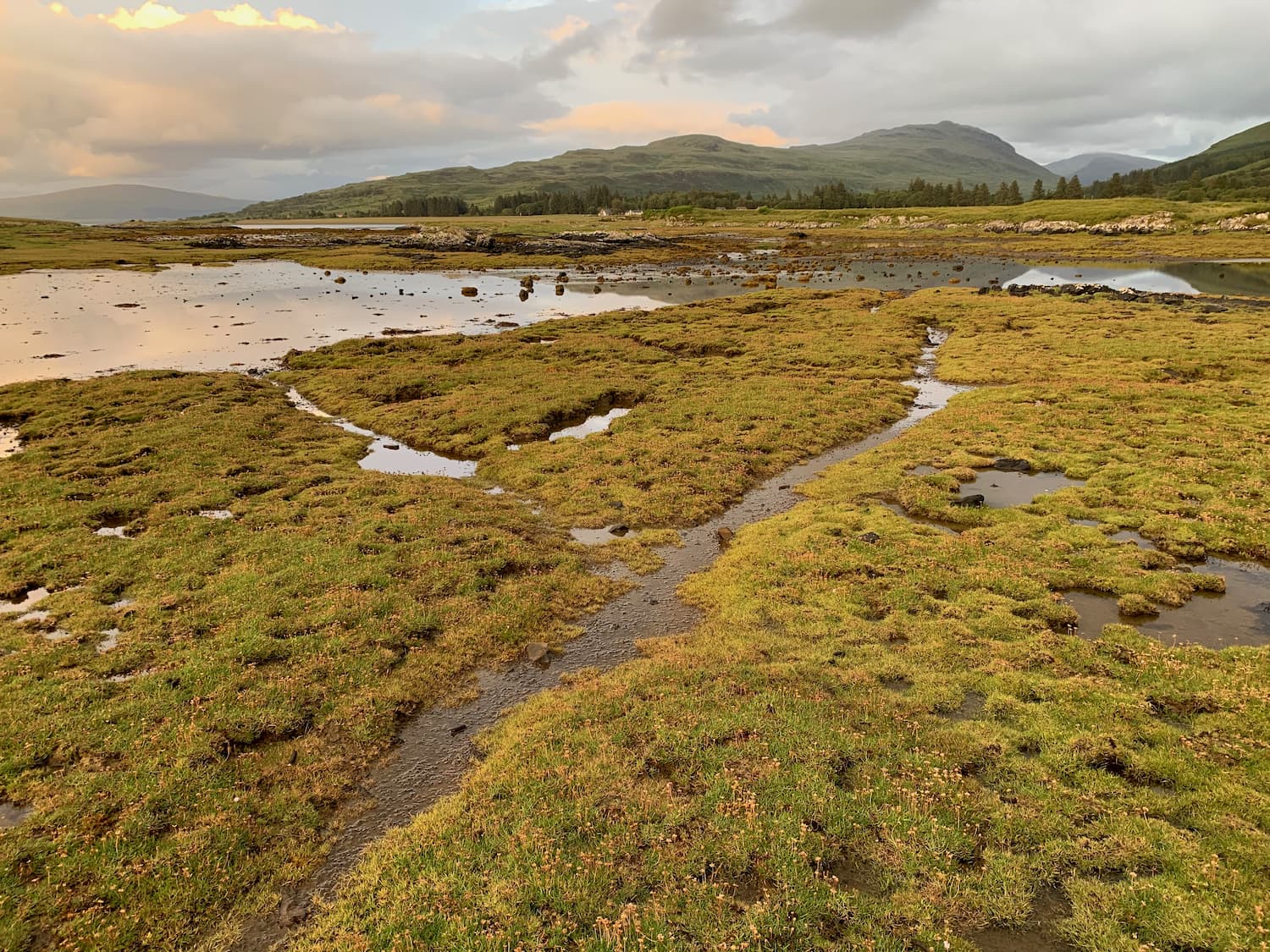Scraps from the Isle of Mull
2020-08-12

Machair behind the dunes at Salen Bay, Mull
A few weeks ago I went camping in Scotland. Below are some scraps I wrote down while I was on the Isle of Mull.
There are significant magnetic anomalies around the islands of St. Kilda. The name St. Kilda is an oddity: there is no such saint. One theory is that it comes from “sunt kelda”, Norse for sweet wellwater. Another is that it is a corruption of the local pronunciation of the island name Hirta. The local accent has a guttural /h/ sound that could sound like /k/ and an /l/ for /r/ swap.
Machair is a fertile and low-lying grassy plain found in Western Scotland. The plain is often grassy and cut with rivulets and lochs. Because of their proximity to the sea (they typically sit right behind a dune bank), the sward is high in silicate (sand or broken up sea shells) content.
Sward means area that is covered in grass. It comes from the Old English “sweard” for skin or rind.
Distinct from machair is links (from Old English “hlinc” meaning rising ground or ridge). Links are grassy coastal dunes found on the east coast. This landscape is perfect for golf, with natural pits and bunkers and hard turf that allows the ball to roll easily on the green. Hence the reference to golf links today.

Ardalanish Beach at dawn
Dunlins are sand-pipers that use their long beaks to pull worms out of the wet sand of coastal areas. They are resident to Mull, Skye, and Uist. We saw a pair on Ardalanish beach.
Jackdaws are like crows but a bit smaller and with a silver part at the back of their head and neck, running down onto their breast.